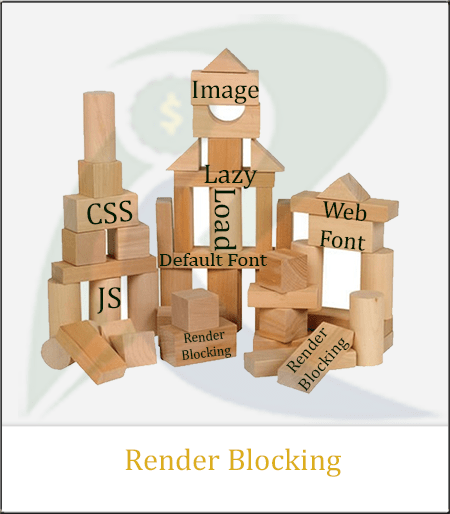Hi, guys, in this post we will discuss how to eliminate render blocking resources. A browser calls out every script to get a queue whenever it has to load a website. Usually, the queue should be empty before the website loading. A scripted queue that slows down the speed of your content loading is known as “Render Blocking.”
It causes a delay for a visitor to reach your website content. Mostly scripts that cause delays are unnecessary or additional things for visitors.
That means removing render blocks without affecting the quality of your services to viewers is possible. Any script that doesn’t involve a viewer query should be deferred until the rest of the page content loads.

Eliminate Render Blocking Resources
If you follow given way so you can easily eliminate render blocking resources.
Role of CSS and JS In Render Blocking:
When we talk about eliminate render blocking resources additional JavaScript and CSS can delay your web pages; this practice is wrong for many reasons. Site speed plays a role in many of the essential aspects of your website, including general usage and Search Engine Optimization (SEO). Your chances of losing visitors and falling in the search engine rankings increase as your site becomes slower.
In general, it is best to ensure your website code is as clean and small as possible to improve overall speed. However, there will always be some code left. By default, browsers will attempt to load everything at once.
How to remove Render-blocking JavaScript and CSS
Before you can have a backup system, you will need to identify which documents are causing problems. To do this, we recommend using Google’s Page Speed Insights. Just enter your URL, and Google tool will crawl that URL and will let you know about the causes of the delay:
To reduce the amount of text blocking on your site, you will need to follow the below best practices:
Minify’ your code like; HTML, CSS, JavaScript, and PHP……….:
This means removing all white spaces and unnecessary comments in code.
Combine your JavaScript and CSS:
You must download and merge multiple JS and CSS files to accomplish this. Ideally, you will have a few such files.
Asynchronous JavaScripts:
It is beneficial to delay JS execution until your page’s primary content loads completely. For intense post text, links, CSS, images, and videos. A reliable way to do this is to use asynchronous.
Role of Images in render-blocking:
Un-optimized images delay the loading of your website content and take time for visitors to reach the desired content. To avoid this void, you can follow the below steps and tricks:
Async or Lazy-load Images:
This is a technique used by successful publishers to load an image after the main content. So that visitors can reach the content within no time; meanwhile, he’ll be reading; images will load to display.
Use light Images:
The format of an image takes time to load as well. Using Webp, PNG, or JPEG images can reduce time.
Use Compressed Images:
Compress the image file before uploading to reduce its size. The lesser the size is lesser the load.
Role of Web-Font:
Web-font also considers an element of render-blocking. However, it is way easy to fix this issue:
Use Google Fonts:
The usage of Google fonts can help to avoid render blocking.
Use Default Fonts:
You can also set default fonts through CSS and JS; load your customized font asynchronously. This will help your website load immediately.

We are a group of volunteers and opening a new scheme in our community. Your website offered us with valuable info to work on. You’ve done a formidable job and our entire community will be thankful to you.